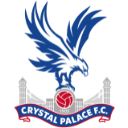
Crystal Palace Football Club, known for its distinct identity and passionate fan base, has a history of apparel that shows its origins and evolution since its founding in 1905. club, "Crystal Palace", pays homage to the iconic iron and glass structure that once stood in Hyde Park, London.
During its early years, Crystal Palace wore a variety of kits, but it was not until 1973 that the club adopted the striking vertical stripe design that has become synonymous with their home kit. Surname. The red and blue stripes on a white background have since become an important part of the club's identity.
Over the years, the design of the stripes has evolved from thick to thin, but the primary colors have remained constant. The red and blue stripes have come to symbolize the pride of the Eagles, as the Crystal Palace is affectionately known.
In the 1980s, Crystal Palace introduced the iconic 'belt' design, with a diagonal stripe across the chest, which has become an enduring symbol of the club's heritage. This design has been periodically revisited in the club's kit history, adding a nostalgic touch to their modern kit.
In the early 1990s, the club experimented with different manufacturers and styles of kits. In 1997, Crystal Palace signed a contract with Italian sportswear brand Diadora, and during this period the club's kits often featured unique designs and intricate details. In recent years, Crystal Palace has struck kit deals with brands like Macron and Puma, resulting in sleek, modern designs that retain the traditional red and blue stripes.
The club's crest has also gone through several iterations, with the eagle, the central feature of most designs, symbolizing the club's nickname. Current logos include an eagle, a soccer ball and the club's initials, CPFC.
Crystal Palace's costume history demonstrates their deep connection to South London and the fanatical loyalty of their fans. The red and blue stripes are a symbol of the club's tenacity and unwavering support, making the Eagles home kit instantly recognizable on the pitch. As Crystal Palace continue to compete at the highest levels of English football, their kit designs will no doubt continue to evolve, but the red and blue stripes will always remain an integral part of the game. their long and rich history.
During its early years, Crystal Palace wore a variety of kits, but it was not until 1973 that the club adopted the striking vertical stripe design that has become synonymous with their home kit. Surname. The red and blue stripes on a white background have since become an important part of the club's identity.
Over the years, the design of the stripes has evolved from thick to thin, but the primary colors have remained constant. The red and blue stripes have come to symbolize the pride of the Eagles, as the Crystal Palace is affectionately known.
In the 1980s, Crystal Palace introduced the iconic 'belt' design, with a diagonal stripe across the chest, which has become an enduring symbol of the club's heritage. This design has been periodically revisited in the club's kit history, adding a nostalgic touch to their modern kit.
In the early 1990s, the club experimented with different manufacturers and styles of kits. In 1997, Crystal Palace signed a contract with Italian sportswear brand Diadora, and during this period the club's kits often featured unique designs and intricate details. In recent years, Crystal Palace has struck kit deals with brands like Macron and Puma, resulting in sleek, modern designs that retain the traditional red and blue stripes.
The club's crest has also gone through several iterations, with the eagle, the central feature of most designs, symbolizing the club's nickname. Current logos include an eagle, a soccer ball and the club's initials, CPFC.
Crystal Palace's costume history demonstrates their deep connection to South London and the fanatical loyalty of their fans. The red and blue stripes are a symbol of the club's tenacity and unwavering support, making the Eagles home kit instantly recognizable on the pitch. As Crystal Palace continue to compete at the highest levels of English football, their kit designs will no doubt continue to evolve, but the red and blue stripes will always remain an integral part of the game. their long and rich history.

